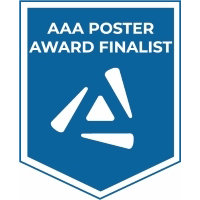Back
ANATOMY
Category: Anatomy
Session: 775 Anatomy
(775.9) Supernumerary Branches of the Dorsomedial Cutaneous Nerve of the Hallux Crossing the Extensor Hallucis Longus Tendon
Tuesday, April 5, 2022
10:15 AM – 12:15 PM
Location: Exhibit/Poster Hall A-B - Pennsylvania Convention Center
Poster Board Number: C9
Introduction: AAA has separate poster presentation times for odd and even posters.
Odd poster #s – 10:15 am – 11:15 am
Even poster #s – 11:15 am – 12:15 pm
Introduction: AAA has separate poster presentation times for odd and even posters.
Odd poster #s – 10:15 am – 11:15 am
Even poster #s – 11:15 am – 12:15 pm
Alexander Pocwierz (West Virginia University School of Medicine), Emily Dumford (West Virginia University School of Medicine), Zachary Gumble (West Virginia University School of Medicine), Allison Hess (West Virginia University School of Medicine), Makaela Quinn (West Virginia University School of Medicine), Matthew Zdilla (West Virginia University School of Medicine), H. Wayne Lambert (West Virginia University School of Medicine)
Alexander Pocwierz
Presenting Author
West Virginia University School of Medicine
Presenting Author(s)
The dorsomedial cutaneous nerve of the hallux (DMCN) provides sensation to the skin of the dorsomedial hallux (big toe) and the first metatarsophalangeal joint. This cutaneous nerve, a terminal branch of the superficial fibular (peroneal) nerve, is located in the dorsum of the foot and crosses the extensor hallucis longus (EHL) tendon during its course. At this intersection point, the DMCN is at risk for injury during operations of the hallux and metatarsophalangeal joint including EHL tendon transfer, hallux valgus or hallux rigidus corrections, bunionectomy, cheilectomy, or injection procedures. Iatrogenic injuries often result in sensory loss, debilitating causalgia, or neuroma formation. The aim of this study was to identify anatomical variations at the intersection of the DMCN and the EHL tendon. Twenty-three feet (12 left-sided, 11 right-sided) from 12 cadavers were dissected to follow the course of the DMCN and look at its intersection with the EHL tendon. Dissection resulted in damage to three DMCNs; however, 20 feet (11 left-sided and 9 right-sided feet) dissections resulted in excellent visualization of both the DMCN and the EHL tendon. Supernumerary branches of the DMCN were identified crossing the EHL tendon in multiple locations in fourteen of twenty feet (70.0%), including nine left feet (9/11, 81.8%) and five right feet (5:9, 55.6%). Of the fourteen feet with supernumerary branches, seven feet (50.0%) had two branches, four feet (28.6%) had three branches, and three feet (21.4%) had four-to-six branches of the DMCN crossing over the EHL tendon in multiple locations. The results of this study identify the complex branching patterns of the DMCN. Surgeons should be aware of that supernumerary branches of the DMCN exist, crossing the EHL tendon in multiple locations, and use ultrasonography to lower the risk of iatrogenic injury to the DMCN during surgical procedures.
West Virginia University Research Apprenticeship Program (WVU RAP) supported the work of authors (AJP, ERD, AJH) on this project.
West Virginia University Research Apprenticeship Program (WVU RAP) supported the work of authors (AJP, ERD, AJH) on this project.

